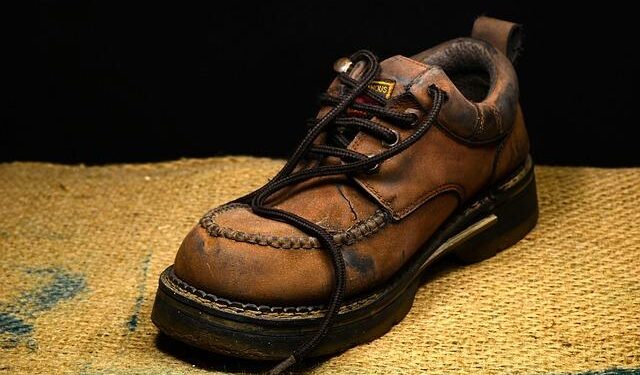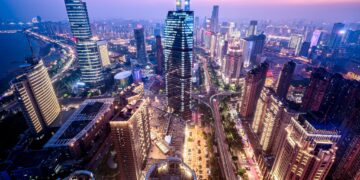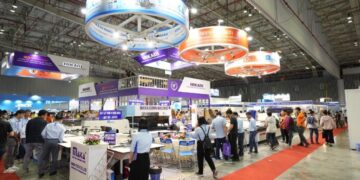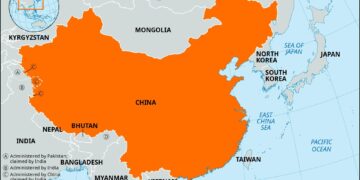In the global manufacturing landscape, few industries illustrate the intricate web of international trade and economic interdependence quite like the footwear sector. As American consumers lace up their favorite sneakers and stylish dress shoes, few are aware of the complex journey each pair undertakes before reaching retail shelves. Central to this narrative is China, a formidable hub of production for many U.S.shoe brands. This article delves into the Chinese manufacturers that power the American footwear industry, exploring the dynamics of this crucial supply chain. from the factories bustling with skilled laborers to the corporate boardrooms dictating design and pricing, we uncover the pivotal role thes Chinese manufacturers play in delivering not only stylish footwear but also shaping the broader economic relationship between the United States and china. Through this lens, we aim to provide a deeper understanding of the intersections of commerce, culture, and global manufacturing that define the modern shoe market.
The Role of Chinese Manufacturing in the Footwear Industry

Chinese manufacturing has become synonymous with the global footwear industry,playing a pivotal role in shaping the landscape of how shoes are produced and marketed today. Over 70% of the world’s footwear is produced in China, a testament to the country’s extensive supply chains, skilled labor force, and advanced manufacturing technologies. Leading U.S. shoe brands, from athletic giants to luxury designers, rely heavily on Chinese factories to fulfill their production needs. These partnerships enable brands to benefit from lower labor costs, efficient logistics, and the ability to scale production quickly to meet changing consumer demands.
moreover, the integration of technological innovation in Chinese manufacturing plants has transformed traditional shoemaking methods. Many factories incorporate automation and sophisticated production techniques that enhance both quality and speed. This rapid evolution allows brands to introduce new styles and releases in a fraction of the time compared to the past. Consider the following factors that illustrate this symbiosis:
- Cost Efficiency: Lower production costs allow brands to maintain competitive pricing.
- Adaptability: Rapid response times to design changes and market trends.
- Quality Control: Stringent standards and practices that ensure consistent product quality.
| brand | Type of Footwear | Manufactured in China |
|---|---|---|
| Nike | Athletic Shoes | Yes |
| Adidas | Sportswear | Yes |
| New Balance | Casual and Running Shoes | Partially |
| Under Armour | Athletic and Lifestyle | Yes |
Understanding the Supply chain Dynamics of U.S. Shoe Brands

The intricate web of supply chain dynamics is pivotal in the performance of U.S. shoe brands, notably when tracing back to their Chinese manufacturing roots. With a meaningful portion of footwear production taking place in China, these brands navigate a complex landscape that influences everything from cost to delivery. Key factors include:
- Production Costs: China offers competitive labor rates, making it an attractive hub for U.S. brands looking to keep manufacturing costs low.
- Quality Control: Renowned for their expertise, Chinese factories have established systems to ensure product quality, essential for brand reputation.
- Logistical Efficiency: Strategic shipping routes from China to the U.S. facilitate timely delivery,a critical factor in fast-paced consumer markets.
Moreover, the evolving geopolitical landscape and trade policies can significantly impact these dynamics. Recent tariffs and trade tensions have led brands to reassess their sourcing strategies, frequently enough resulting in a diversification of manufacturers. Here’s a brief look at how these dynamics are shifting:
| Factor | impact on Brands |
|---|---|
| Tariffs | Increased costs for imported footwear. |
| Sourcing Diversification | Exploring manufacturing options in Southeast Asia and beyond. |
| Technological Innovation | Embracing automation to improve efficiency and speed. |
Examining Labor Practices and Ethical Standards in China
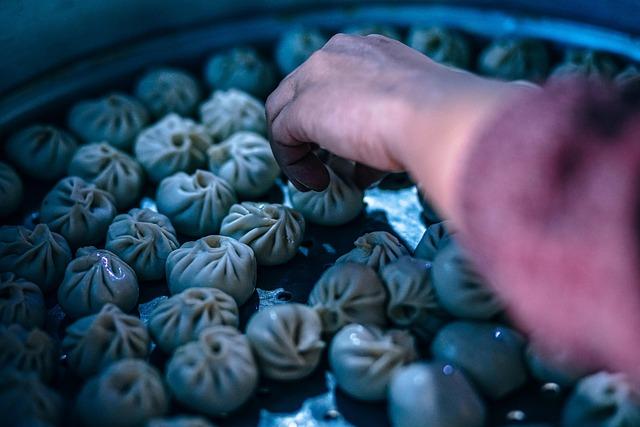
The interplay between international demand for low-cost footwear and labor standards in China has raised critical questions regarding the ethical implications of production practices. Many reputable U.S. shoe brands rely on Chinese manufacturers to produce their goods at competitive prices, yet these practices can sometimes come at a significant human cost. Reports indicate that workers often face long hours, low wages, and precarious working conditions, which starkly contrast with the corporate promises of corporate social responsibility. Key issues include:
- Wages: Many factory workers earn below the living wage threshold, struggling to meet basic needs.
- Working Conditions: Factories often lack adequate safety measures, exposing workers to hazardous environments.
- Employment Practices: Temporary contracts and a lack of job security can make workers vulnerable to exploitation.
Efforts to improve these labor conditions are underway,albeit slowly. Some brands have begun to implement stricter oversight and collaborate with NGOs to ensure ethical practices. Yet,the challenge remains that monitoring supply chains is complex,especially in a country with a vast number of subcontractors. The following table illustrates some of the measures taken by various brands:
| Brand | Initiatives | Results |
|---|---|---|
| Brand A | Regular audits and worker feedback systems | Improved workplace safety ratings |
| Brand B | living wage commitments | Greater employee retention |
| Brand C | Partnerships with local NGOs | Enhanced monitoring of labor practices |
Technological Advancements Transforming Shoe Production
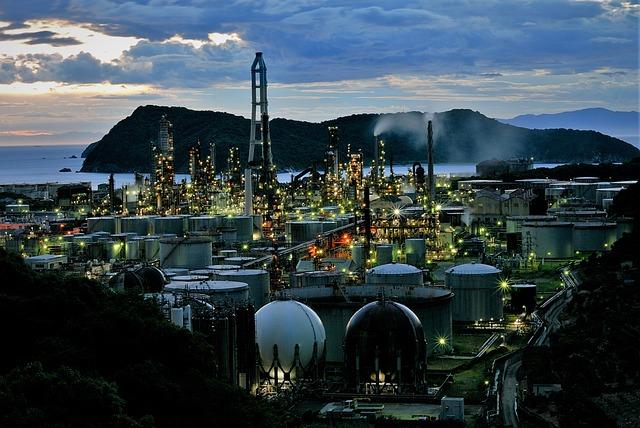
Recent years have witnessed a seismic shift in the production methods used by shoe manufacturers in China, heavily driven by technological advancements. With the integration of 3D printing and automated assembly lines, companies have accelerated their production capabilities while minimizing labor costs. This new wave of technology not only streamlines the manufacturing process but also enables customization at an unprecedented scale.Consumers can now enjoy personalized designs and fits, all produced within days rather than weeks, responding swiftly to market trends.
Moreover, innovations in lasting materials are reshaping the fabric of footwear production. Manufacturers are increasingly opting for eco-friendly materials,such as recycled plastics and biodegradable composites,aiming to reduce the environmental impact of shoe production. A growing emphasis on smart manufacturing techniques, which utilize data analytics and the Internet of Things (IoT), allows for real-time monitoring of production lines, enhancing efficiency and reducing waste. The table below summarizes some of the latest technologies revolutionizing shoe production:
| Technology | description |
|---|---|
| 3D Printing | Enables rapid prototyping and personalized shoe designs. |
| Automated Assembly Lines | streamlines production, reducing costs and time. |
| Sustainable Materials | Utilizes eco-friendly resources to minimize environmental impact. |
| Smart Manufacturing | Employs IoT for efficiency and waste reduction in production. |
Navigating Trade Policies Impacting U.S.-China Footwear Relations
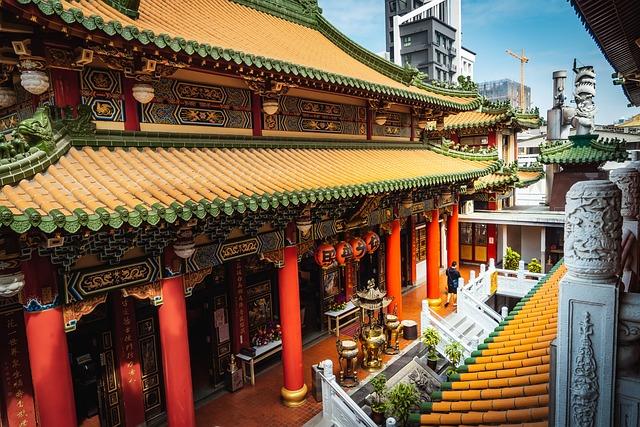
As the global landscape continues to shift, U.S.-China footwear relations remain profoundly influenced by an array of trade policies. Recent tariffs have reshaped the dynamics of the footwear manufacturing sector, leading to significant cost implications for American brands that rely on Chinese manufacturers. The American market,known for its demand for quality and affordability,finds itself at a crossroads where decisions rooted in trade policies can dictate pricing strategies and ultimately impact consumers. Given the escalating tensions, brands are compelled to evaluate their sourcing strategies, considering alternatives that maintain production efficiency while possibly mitigating tariff impacts.
In navigating these complexities, it is essential for stakeholders to understand the following key factors:
- Tariff rates: Higher tariffs on footwear imports can lead to increased consumer prices.
- Supply Chain Adjustments: Brands are exploring diversified manufacturing locations to hedge against U.S.-China trade uncertainties.
- Market Adaptation: American companies must stay agile to respond to changing policies and consumer preferences.
- Innovation and Sustainability: Brands are investing in sustainable practices to appeal to environmentally conscious consumers amidst policy changes.
To illustrate the impact of changing trade policies on footwear pricing, consider the following table that highlights the estimated cost variations influenced by different tariff scenarios:
| Tariff Rate | Price per Pair (in USD) | Estimated Consumer Impact |
|---|---|---|
| 0% | $50 | no impact on pricing |
| 10% | $55 | Minor increase in prices |
| 25% | $62.50 | Significant consumer price hike |
Future Trends: Sustainability and Innovation in Shoe Manufacturing
As the global focus shifts towards sustainability, shoe manufacturers are increasingly embracing green practices without compromising on innovation. Chinese manufacturers supplying U.S. shoe brands are leading this transformation by integrating advanced technologies and eco-friendly materials into their production processes. These advancements not only cater to the rising consumer demand for sustainable products but also enhance operational efficiency. Some key practices gaining traction include:
- Utilization of Recycled Materials: Brands are now leveraging recycled plastics and rubber in their designs, minimizing waste and reducing the environmental footprint.
- Waterless dyeing Techniques: Thai manufacturers are implementing cutting-edge methods to dye materials without water, drastically cutting down resource consumption.
- energy-Efficient Manufacturing: Factories are investing in renewable energy sources such as solar and wind to power their operations, significantly lowering carbon emissions.
Moreover, this shift towards sustainable manufacturing is not just about environmental responsibility; it’s also seen as a pathway to innovation and competitiveness in the market. By adopting circular economy principles, these manufacturers are developing shoes that can be easily disassembled for recycling at the end of their life cycles. This trend is expected to reshape the industry, as highlighted by the following table showcasing some notable U.S. shoe brands and their sustainability initiatives with Chinese manufacturers:
| Brand | Sustainability Initiative | Year Implemented |
|---|---|---|
| Nike | Move to Zero – 100% recycled materials | 2021 |
| Adidas | Partnership for Ocean Plastics | 2015 |
| Puma | Eco-Friendly Packaging | 2020 |
Key Takeaways
the intricate relationship between U.S. shoe brands and their Chinese manufacturers underscores a complex web of globalization that shapes our economy and consumer choices. As these brands navigate challenges such as supply chain disruptions, changing labor practices, and evolving consumer preferences, the role of Chinese manufacturers remains pivotal in ensuring the quality and affordability that American consumers have come to expect. By exposing the behind-the-scenes dynamics of this partnership, we gain a deeper thankfulness for the craftsmanship and labor that bring our favorite footwear to life. Understanding this relationship not only informs our purchasing decisions but also highlights the interconnectedness of our global economy, urging consumers and industry leaders alike to consider the broader implications of their choices in this multifaceted landscape.

